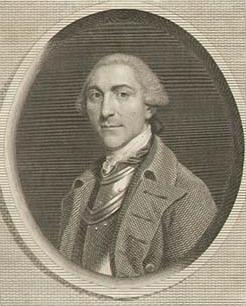New London’s Liberty Riot
In fact, the whole affair started with action off New London. Treasury Department documents that Joseph R. Frese cited in this article from the Colonial Society of Massachusetts reveal more details than I knew last week.
On the morning of 16 July, Capt. William Reid of the sloop Liberty stopped two vessels in Long Island Sound about three miles from the New London lighthouse. One was the brig Thames, commanded by Joseph Packwood. The other was the sloop Sally, commanded by Edward Tinker. Both those ships were based in New London, but the Thames was nominally sailing from Haiti to New York.
As some New England newspapers reported, Reid suspected that Packwood had unloaded some of his Haitian rum and sugar onto Finker’s sloop so it could be landed secretly on the Connecticut coast and the Customs department couldn’t collect duties on it. Then he’d deliver the rest in New York.
Reid put his own men onto the brig and sloop and led the little fleet into Newport. Packwood, Finker, and most of their crewmen had to make their way home in boats. Soon after Packwood landed, he and the owner of the Thames, Nathaniel Shaw, Jr., set out for Newport. We know what happened there on 19 July. By the next day, the Liberty was wrecked, the Thames released for lack of evidence, and the Sally illegally “rescued.”
Back in New London, the waterfront crowd went hunting for the local Customs officers whom they held responsible for those seizures. Deputy Collector John Miller and Comptroller Thomas Moffatt reported that on 24 July “several People” threatened a tidesman named Barnabas Willson. They wrote, “on this occasion We said what We then thought was proper to him & took such steps as inclined Us to hope and beleive that no mischief would happen to him, but We were mistaken if not deceived.” Dr. Moffatt had been the victim of mobbing during Newport’s Stamp Act riots, so he should have known better.
Whatever “steps” those officials took, it wasn’t enough for Willson’s sake. In “the twilight of the Evening of the 25th,” the crowd came looking for him again, as well as another tidesman named John Bloyd. The Customs officers wrote of Bloyd:
not finding him at home they suspected he was in the House of Mr Collector [Duncan] Stewart where they repaired and demanded him but being denied and refused admittance by a Maid Servant from the Window of an upper Chamber they broke forcibly into the House search’d every where and found him on the House top, from which they led him through the Street near the Episcopal Church and there questioned him concerning the Information given to Captain Reid and chiefly about some Rum seized & afterwards stolen at East Haddam a year and a half ago then they dismised him without further InjuryThe crowd turned back to Willson. That man himself later told justice James Murray of Boston:
they seized this Deponent Drag’d him thro’ the Streets, strip’d him of his Cloaths, tied him to a sign Post (having cut off his Hair) and then gave him Thirty two severe lashes with a Whip.By then it was “about Eleven OClock at night.” Some of the rioters went to find Thomas Dare, the Customs office surveyor—a social step up from the tidesmen. Those men took Dare to the place where they had tied up Willson. They “questioned him concerning the late seizure and seemd disposed to Use him very roughly, but were prevented by the Interposition of some who either rescued or beg’d him off.”
Finally, the New London crowd attacked the top local Customs official symbolically, the same way Bostonians had done in June 1768 and Newporters had done a few days before. The men
repaired to Mr Stewart’s Wharf seized the Boat hauld her ashore hoisted her sails with all Appurtenances except the Iron Ballast which they threw on shore, then drag’d her in triumph to a rising ground near the Town where they burnt her, on the Morning of the 26th very earlyThat makes a total of four burned boats, with the Liberty itself still to come.
Miller and Moffatt reported that “poor Willson set out on foot for Boston who can inform your Honors more exactly of this Mob and of what has been said and done to him.” In Boston, Willson testified to Justice Murray and reported to the Commissioners of Customs, who gave him £2.5 for his troubles.
Surveyor Thomas Dare “thought it best to retire for the present,” his colleagues reported, though by the end of 27 August they expected him to “return here this day and We have some assurance that he will not be insulted.”
TOMORROW: The Customs service strikes back.





